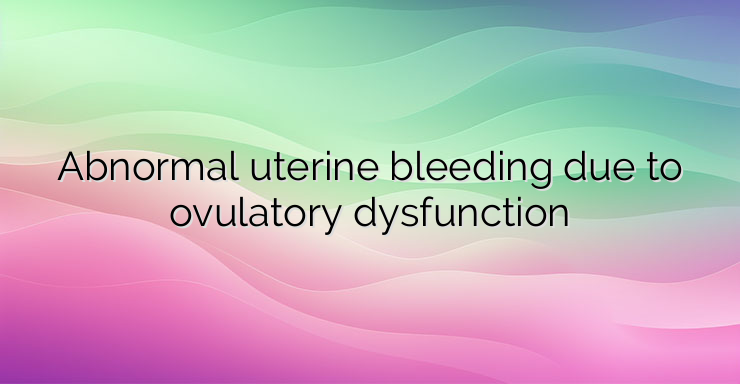Abnormal uterine bleeding due to ovulatory dysfunction is the most common cause of abnormal bleeding, occurring most often in women over 45 years of age and in adolescents (about 20% of cases). About 90% of cases are anovulatory, only 10% are associated with ovulation. During the anovulatory cycle, the corpus luteum is not formed. In this way, the normal cyclic secretion of progesterone does not take place and estrogen stimulates the endometrium without opposition. Without progesterone, the endometrium continues to thicken, eventually outgrowing its blood supply, then sheds incompletely and bleeds irregularly, sometimes profusely or for prolonged periods. When this abnormal process occurs repeatedly, the endometrium can become hyperplastic, sometimes with atypical or cancerous cells. In ovulatory abnormal uterine bleeding, progesterone secretion is prolonged. This results in irregular shedding of the endometrium as estrogen levels remain low, close to the bleeding threshold. Obese women may experience ovulatory abnormal uterine bleeding if estrogen levels are high, resulting in amenorrhea alternating with irregular or prolonged bleeding. Chronic bleeding, in turn, can lead to iron deficiency anemia. The causes of the condition in non-pregnant women of reproductive age can be classified as structural or non-structural to aid in identification of the cause and in treatment. Anovulatory uterine bleeding can result from any disorder or condition that causes anovulation. Anovulation can most often be secondary to polycystic ovary syndrome or idiopathic (when it occurs with normal gonadotropin levels). Sometimes anovulation is the result of hypothyroidism. During perimenopause, the condition can be an early sign of ovarian failure. The follicles are still developing, but despite increasing levels of follicle-stimulating hormone, they are not producing enough estrogen to trigger ovulation. About 20% of women with endometriosis have anovulatory uterine bleeding due to unknown mechanisms. Compared to a typical period, there may be unusual uterine bleeding. Menstruation occurs earlier than the 21st day and involves more blood loss (menorrhagia or hypermenorrhoea). They occur frequently and irregularly between periods (metrorrhagia). Includes more blood loss during menstruation and frequent and irregular bleeding between periods (menometrorrhagia) Ovulatory uterine bleeding tends to cause excessive bleeding during regular menstrual cycles. Women may have other symptoms of ovulation, such as premenstrual symptoms, breast tenderness, mid-cycle cramping pain, a change in basal body temperature after ovulation, and sometimes dysmenorrhea.Anovulatory uterine bleeding, on the other hand, occurs at unpredictable times and is not accompanied by cyclical changes in basal body temperature. Bibliography: Munro MG, Critchley HOD, Fraser IS, FIGO (International Federation of Gynecology and Obstetrics) Menstrual Disorders Committee


Leave a Reply